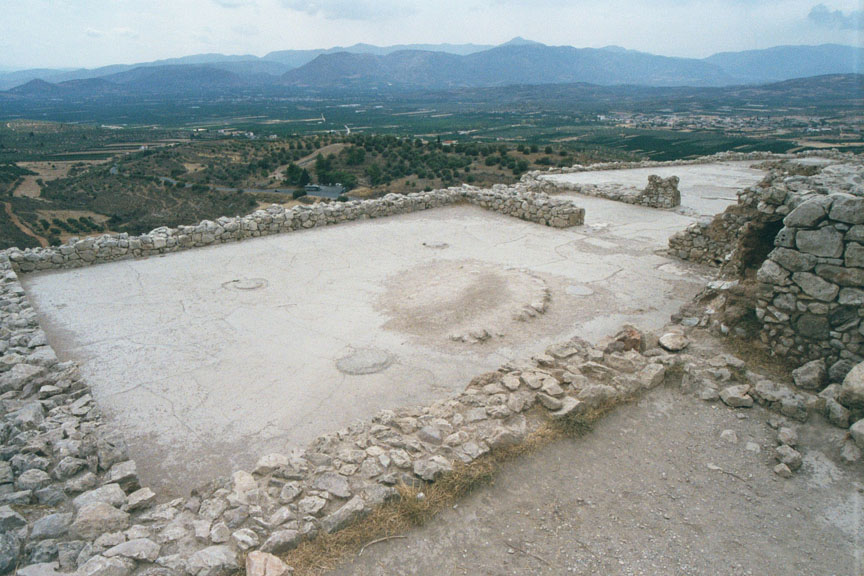The Mycenaeans
The stories in the Iliad were first inspired by the Mycenaeans, a culture of people dwelling on the mainland of the Peloponnesus. They were considered to be the first Greeks.
c. 1600 - 1200 BCE
The Mycenaeans were pre-political.
What does this mean?
The Mycenaeans lived before formal codes of law or centralized government. Instead, they functioned according to social contracts. The highest leader of the Mycenaean holdings called the wanax served as the center of authority in the society. It was his job to distribute resources and materials to the people in his charge, rule over a large household, and organize trade to keep his power. He lived in a fortified palace called the megaron.
This is the main chamber of the megaron at Mycenae. It contained the central hearth and housed the wanax and his full household, called the tenemos. This household and its position in society came with the title of wanax.
These megarons formed the center of Mycenaean life. Situated on top of the acropolis, the megaron was surrounded by massive, legendary walls called the Cyclopean Walls, which have survived to today. These megaron settlements littered the landscape of the Peloponnese as far as Mycenaean influence reached and functioned as centers of trade across the Mediterranean, reaching as far as Egypt and the Near East. This culture was rich with precious materials, such as amber, gold, lapis lazuli, and ivory. The Mycenaean trade ships ruled the Mediterranean seas unchallenged.
The Warring Achaeans
What does war mean in a time without war?
Mycenaean influence reached as far south as Crete and as far north as Mount Olympus. Each Mycenaean settlement had its own ruler, trade, and society. They functioned independently of each other – but this does not mean they lived in peace. Though there was little organized warfare in which nations came together under one cause, warriors frequently held minor raids for profit.
FUN FACT:
The only literary evidence we have of the Mycenaean Age comes in the form of approximately 3000 clay tablets written in the language of Linear B. Linguistic scholars have identified Linear B to be the first recognizable origin of the ancient Greek language. These tablets kept records of palatial administration, mostly concerning trade and population.

This is an example of the Linear B tablets. They were accidentally baked in the fires that destroyed the megarons. Knossos in Crete and Mycenae and Pylos in mainland Greece bore the largest numbers of the tablets.
The clay tablets occasionally mention Homeric titles, including Achilles: A-KI-RE-U. There is no current evidence that these names connect to the Homeric characters of the same name.

